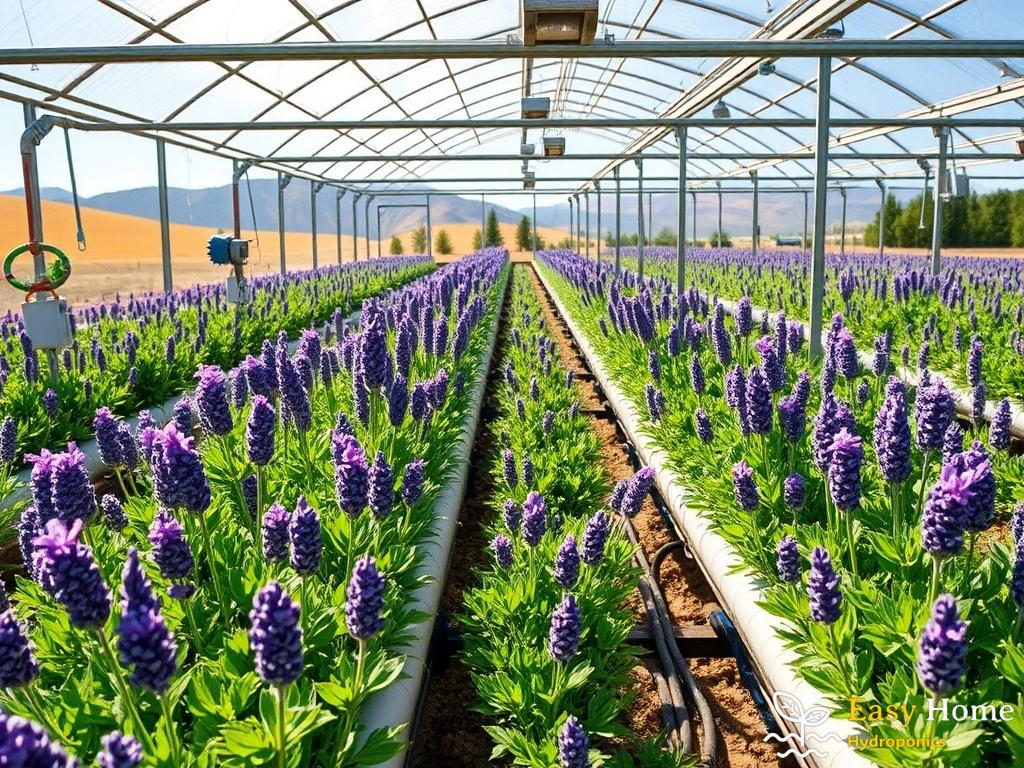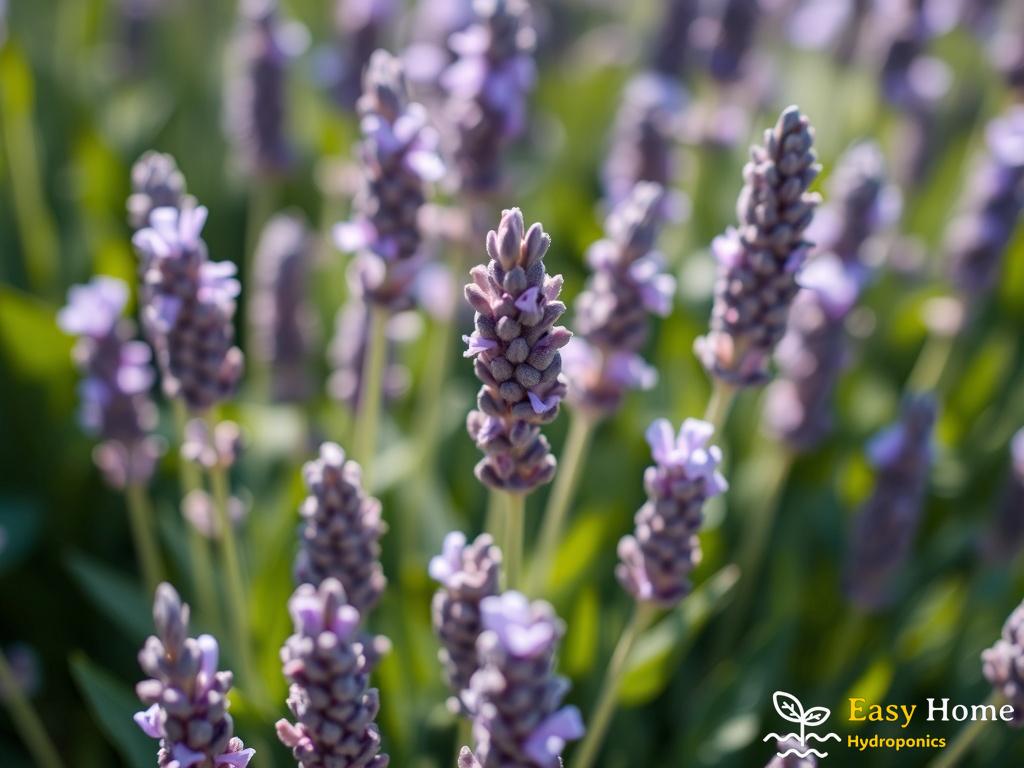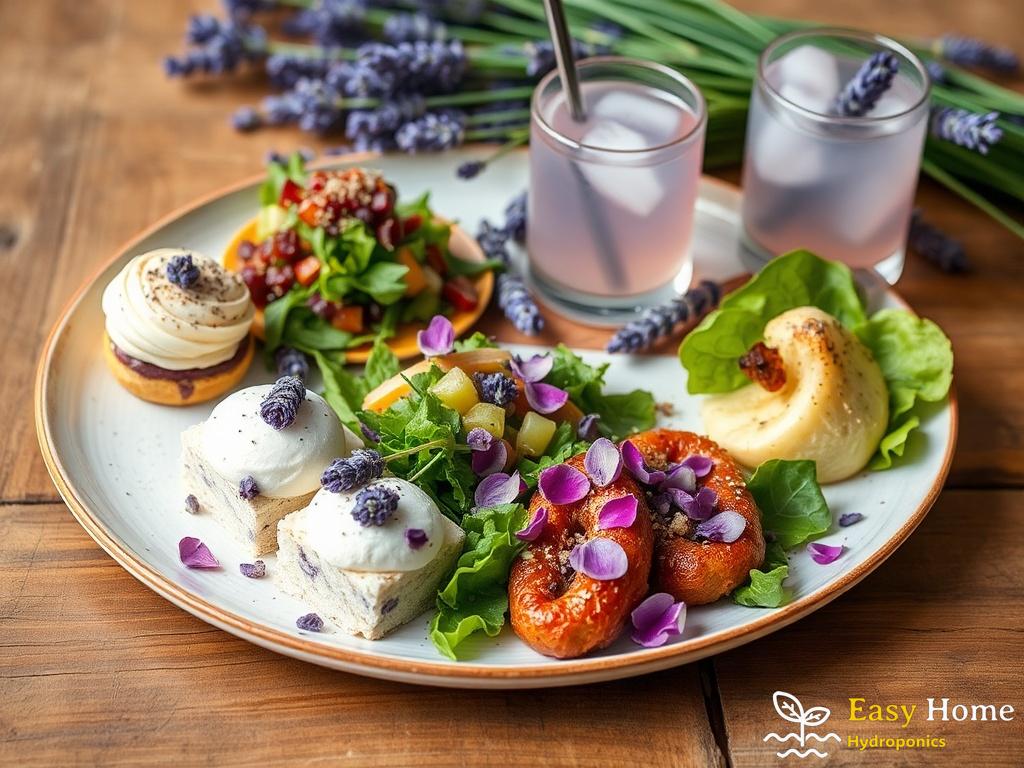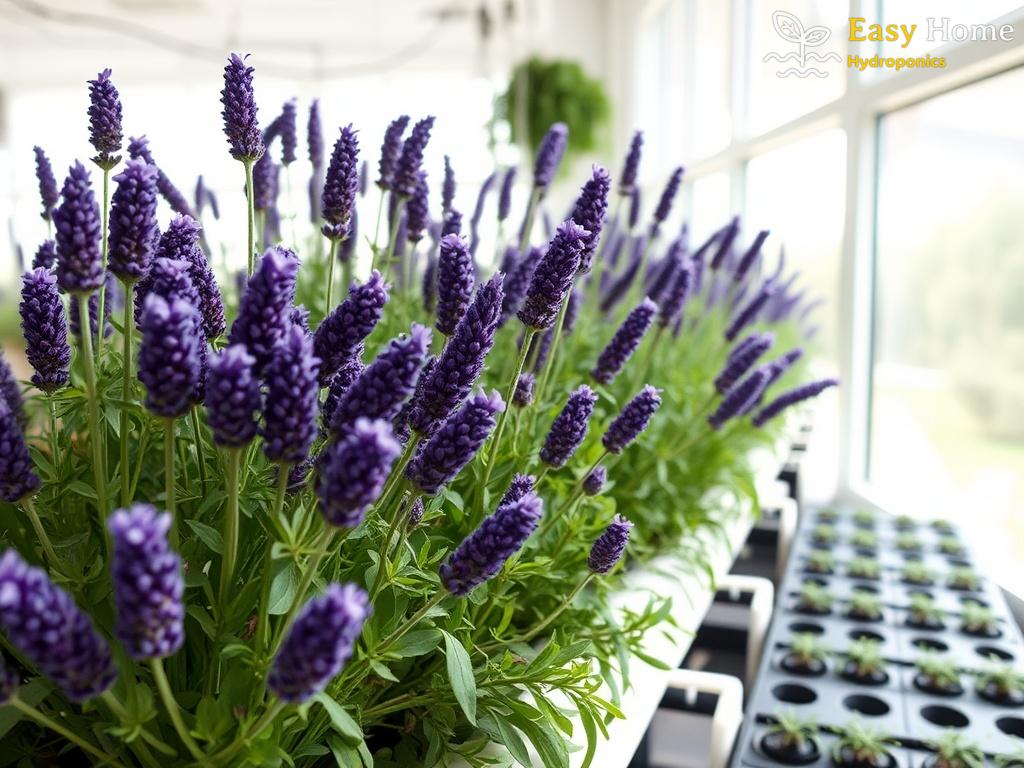The Art of Hydroponic Lavender Cultivation

In recent years, the allure of hydroponic farming has captivated both seasoned gardeners and enthusiastic novices alike. Lavender, with its enchanting fragrance and culinary versatility, has emerged as a star in this innovative agricultural approach. Imagine plucking fresh lavender sprigs right from your indoor garden, ready to infuse your dishes or create delightful home fragrances. This article delves into the art of cultivating hydroponic lavender, revealing secrets to success that will pique the interest of any aspiring grower.
To embark on your lavender-growing journey, understanding the necessary environmental conditions is crucial. Hydroponic systems allow for precise control over nutrients and water, leading to robust plant health. Lavender thrives in a pH range of 6.0 to 7.0 and requires ample light, ideally 12-16 hours per day. This section will guide you through the essential components to create an optimal environment:
- Light: Utilize full-spectrum LED grow lights to mimic sunlight.
- Temperature: Maintain a warm atmosphere, ideally between 65°F to 75°F (18°C to 24°C).
- Humidity: Keep humidity levels low, around 40%-60% to prevent mold.
- Nutrients: Use a balanced nutrient solution specifically designed for herbs.
Growing lavender hydroponically is not merely a task; it’s a journey filled with anticipation and joy. Starting from seeds or cuttings, patience is key as you nurture these delicate plants to maturity. Below is an overview of the essential steps to enjoy a bountiful harvest:
- Seed Selection: Choose high-quality lavender seeds, such as English or French varieties.
- Germination: Start seeds in a seed tray with a light growing medium.
- Transplanting: Once seedlings develop, transfer them to your hydroponic system.
- Maintenance: Regularly monitor water levels and nutrient concentration.
- Harvesting: Enjoy the fruits of your labor by harvesting at peak bloom for maximum fragrance and flavor.
By following these steps, you can create a thriving hydroponic lavender garden that brings both beauty and utility into your home.
Unlocking the Secrets of Lavender’s Fragrance

Lavender is renowned not just for its aesthetic charm but also for its captivating scent that can transform any space into a fragrant oasis. The essence of lavender is a complex interplay of essential oils, and understanding how to cultivate these aromatic compounds can elevate your hydroponic lavender garden to new heights. By delving into the nuances of lavender’s fragrance, you can enhance both the sensory and culinary experiences it offers.
Understanding Aromatic Compounds is the first step in unlocking the secrets of lavender’s fragrance. The rich aroma is primarily derived from essential oils, with linalool and linalyl acetate being the most prominent. These compounds are responsible for the sweet, floral scent that many find soothing and therapeutic. The concentration of these oils can be influenced by various factors, including light exposure, nutrient levels, and even the specific variety of lavender chosen for cultivation.
When growing lavender hydroponically, light quality plays a pivotal role in the production of these essential oils. Studies have shown that full-spectrum light can significantly boost oil synthesis, leading to more fragrant blooms. In contrast, inadequate lighting can result in weaker aromas. Therefore, providing your lavender plants with optimal lighting conditions is crucial for enhancing their aromatic profile.
Another key factor is the nutrient balance. Lavender thrives on a diet that is low in nitrogen and rich in potassium and phosphorus. These elements not only promote healthy growth but also contribute to the development of aromatic oils. Adjusting your hydroponic nutrient solution to reflect this balance can lead to a more potent lavender fragrance. Monitoring your plants regularly to ensure they are receiving the right nutrients will ensure that they flourish.
Furthermore, the timing of your harvest is vital for maximizing the fragrance. Harvesting lavender at the right moment—just when the buds are opening but before they fully bloom—ensures that the essential oil content is at its peak. This attention to detail can transform your hydroponic lavender into a fragrant powerhouse, perfect for culinary uses or as a natural air freshener.
| Aspect | Optimal Condition | Impact on Fragrance |
|---|---|---|
| Light | 12-16 hours of full-spectrum | Increases essential oil production |
| Nutrients | Low nitrogen, high potassium & phosphorus | Enhances flavor and aroma |
| Harvest Timing | When buds are just opening | Maximizes oil concentration |
By understanding and manipulating these factors, you can unlock the rich, soothing fragrance of lavender, making your hydroponic garden not only a source of beauty but also a treasure trove of aromatic delights. The journey of growing lavender is about more than just the plants; it’s about creating an environment where their natural qualities can shine, bringing fragrance and flavor to your life.
Flavorful Uses of Hydroponic Lavender in Culinary Delights

Lavender is not just a feast for the eyes and the nose; it is a culinary gem waiting to be discovered in your hydroponic garden. The unique flavor profile of lavender can elevate a variety of dishes, transforming ordinary meals into extraordinary culinary experiences. With its delicate floral notes and a hint of earthiness, hydroponic lavender offers a fresh and vibrant addition to your kitchen. In this section, we will explore how to incorporate this aromatic herb into your culinary repertoire, unlocking a world of flavors.
One of the most exciting aspects of using hydroponic lavender in cooking is its versatility. From savory to sweet, lavender can enhance both types of dishes. Imagine a roasted chicken seasoned with lavender-infused olive oil, where the floral notes complement the savory richness of the meat, creating a dish that tantalizes the palate. Alternatively, lavender can shine in desserts, such as lavender-infused honey drizzled over vanilla ice cream, offering a refreshing twist that is sure to impress.
When integrating lavender into your culinary creations, it is essential to remember that a little goes a long way. The key is to use culinary-grade lavender, which is specifically cultivated for flavor rather than fragrance. This distinction ensures a pleasant taste experience without overwhelming the dish. Start by adding finely chopped lavender buds to marinades or dressings, where they can infuse their essence into the ingredients. Alternatively, steep lavender in creams or syrups to create delightful toppings for pancakes or waffles. The flavor of lavender pairs beautifully with citrus, fruits, and even chocolate, making it a fantastic addition to a variety of recipes.
Hydroponic lavender also makes a captivating ingredient in beverages. Whether you’re crafting a refreshing lavender lemonade or an elegant lavender-infused cocktail, the floral notes of lavender can add depth and complexity to your drinks. To make lavender lemonade, steep lavender buds in hot water, mix with fresh lemon juice and sweetener, and serve over ice for a revitalizing drink. For cocktails, consider incorporating lavender syrup into gin or vodka-based concoctions, where the herb’s aroma enhances the overall drinking experience. The delicate balance of flavors will surely make your beverages a standout at any gathering.
Incorporating hydroponic lavender into your cooking not only adds a dash of creativity but also allows you to experiment with flavors that are both delightful and distinctive. As you nurture your lavender in a hydroponic setup, remember that each sprig holds the potential to transform your dishes into culinary masterpieces. So, step into the kitchen with your fresh lavender, and let your creativity flourish!
Maximizing Yield: Nutrients and Care for Lavender Plants
When it comes to cultivating hydroponic lavender, achieving a bountiful yield is not just about having a green thumb; it’s about understanding the intricate relationship between nutrients and care. Lavender, known for its stunning blooms and captivating aroma, can flourish in a hydroponic setup if the right conditions and nutrient balance are maintained. This section will unravel the secrets of maximizing lavender yields, ensuring that your indoor garden becomes a fragrant and flavorful paradise.
Understanding Nutrient Requirements plays a pivotal role in the successful growth of hydroponic lavender. Unlike traditional soil gardening, hydroponics allows for precise control over nutrient delivery, which is essential for the growth of vibrant lavender plants. Lavender thrives on a nutrient-rich diet that is low in nitrogen but higher in potassium and phosphorus. This unique blend is crucial, as it not only promotes robust plant growth but also enhances the production of aromatic oils that give lavender its unforgettable scent. Adjusting your nutrient solution to meet these specific needs will yield healthier plants that produce more abundant blooms.
In addition to nutrient formulation, water management is equally important. Lavender prefers well-drained conditions, making it vital to monitor water levels carefully in a hydroponic system. Maintaining a consistent moisture level without waterlogging the roots will allow the plants to absorb nutrients effectively. It’s also beneficial to incorporate an air pump into your system, which can help oxygenate the water, promoting root health and overall plant vigor. Keeping a close eye on your water temperature, ideally between 65°F to 75°F, ensures that the lavender roots remain comfortable and productive.
Caring for Lavender involves more than just providing nutrients and water; it requires attention to environmental factors as well. Cultivating lavender in a hydroponic system necessitates an understanding of light requirements. Providing your plants with 12-16 hours of full-spectrum light daily will encourage robust growth and increase the essential oil production that defines lavender’s enchanting fragrance. Moreover, maintaining a warm temperature and low humidity levels will help mitigate the risk of mold and disease, which can be detrimental to lavender’s overall health.
Regularly monitoring your plants for pests and diseases is also a crucial aspect of lavender care. Although lavender is relatively resilient, keeping a watchful eye can prevent minor issues from escalating into significant problems. Implementing an integrated pest management strategy, which involves using natural predators and organic solutions, will help maintain a healthy growing environment without compromising the integrity of your plants.
By mastering the art of nutrient management and attentive care, you can unlock the full potential of your hydroponic lavender. With each sprig harvested, you’ll not only enjoy the delightful fragrance and flavor but also the satisfaction of cultivating a lush, productive garden that elevates your culinary creations and infuses your home with natural beauty.
Creating a Beautiful Hydroponic Lavender Oasis at Home
Imagine stepping into your home and being greeted by the soothing scent of lavender wafting through the air. Creating a hydroponic lavender oasis is not just about growing plants; it’s about cultivating an environment that enhances your living space while providing a source of fragrance and flavor. This journey towards establishing your indoor sanctuary can be rewarding and invigorating, making it an exciting project for both novice and experienced gardeners alike.
When setting up your hydroponic lavender garden, the design of your space plays a crucial role in both aesthetics and functionality. A well-thought-out layout will not only enhance the visual appeal of your home but will also ensure that your lavender thrives. Consider the following elements to create a stunning hydroponic display:
- Location: Choose a bright spot with access to natural light or install grow lights to simulate sunlight.
- Container Selection: Use decorative containers that complement your interior decor while providing adequate drainage.
- Color Coordination: Pair lavender with complementary plants or decor items to enhance its vibrant purple hues.
- Accessibility: Ensure your setup allows easy access for maintenance and harvesting.
Creating a beautiful hydroponic lavender oasis goes beyond just planting; it involves nurturing an experience that captivates the senses. Consider the following aspects to elevate your lavender garden:
| Aspect | Enhancement Tips |
|---|---|
| Fragrance | Strategically place your lavender near windows or vents to allow the scent to diffuse throughout your home. |
| Visual Appeal | Mix different lavender varieties for varied colors and heights, creating a visually dynamic display. |
| Interaction | Incorporate seating near your lavender oasis to encourage relaxation and enjoyment of the aromatic environment. |
After nurturing your hydroponic lavender garden, the time will come to enjoy the fruits of your labor. Harvesting lavender not only provides you with fresh sprigs for culinary delights but also enhances the fragrance in your home. Remember to follow these tips for the best harvest:
- Timing: Harvest when the buds are just starting to open for maximum oil concentration.
- Method: Use sharp scissors or pruning shears to cut stems cleanly.
- Storage: Store harvested lavender in a cool, dark place to preserve its fragrance.
By creating a hydroponic lavender oasis at home, you will not only enrich your living space with beauty and aroma but also embark on a delightful journey of growth and culinary exploration. Embrace this aromatic adventure and transform your indoor environment into a fragrant sanctuary.




